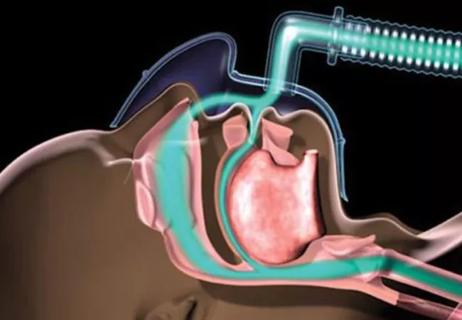A look at how custom-fitted oral appliances work and when they’re a good fit for patients
Although a continuous positive airway pressure (CPAP) machine is one of the most common treatments for sleep apnea, there are alternatives.
Advertisement
Cleveland Clinic is a non-profit academic medical center. Advertising on our site helps support our mission. We do not endorse non-Cleveland Clinic products or services. Policy
“CPAP remains the gold standard. It’s an amazing treatment – highly effective,” says Todd Coy, DMD, Section Head of Dentistry and Oral Surgery in the Department of Otolaryngology-Head & Neck Surgery at Cleveland Clinic. “But admittedly, a lot of people have trouble tolerating it or maybe have quite mild sleep apnea and can adequately treat it with other options.”
In a recent episode of Cleveland Clinic’s Head and Neck Innovations podcast, Dr. Coy delves into one of those options – mandibular advancement devices. He discusses:
Click the podcast player above to listen to the episode now, or read on for a short edited excerpt. Check out more Head and Neck Innovations episodes at clevelandclinic.org/podcasts/head-and-neck-innovations or wherever you get your podcasts.
Podcast host Paul Bryson, MD, MBA: What can one expect with regard to plan of care, patient experience in terms of who they're meeting with? What does the appointment entail? Just briefly, if you can, walk us through that.
Todd Coy: Sure. So, with a variety of screening tools, overall sleep apnea risk can be assessed and then usually followed up with a sleep study needed to confirm the diagnosis. And once that's in place, then a referral can be placed with me or one of my colleagues.
Advertisement
We would start with a consultation and explain the process to the patient – how it works, what it looks like. And as we move through that process, we would set up a time to make impressions or molds of the teeth. And then we'd work with a laboratory that fabricates any number of devices, and there are over a hundred little varieties of these oral appliances.
But we would then start them in use. And some patients actually just need to stabilize the jaw. It doesn't have to go terribly far forward at all. Could be just stabilizing the jaw in a neutral position, and that might be enough to help keep the airway open. As the process goes on over a month or two, we assess the patient's symptoms, mostly subjectively, and may in smaller increments move the mandible further and further forward until their symptoms are reported as resolved.
And then we refer back to the referring physician or medical provider to confirm basically that the appliance is being effective. And usually, that's with a repeat sleep study while wearing the appliance and finding out exactly – what more objectively – is being done with it.
Advertisement
Advertisement

HNS device offers new solution for those struggling with CPAP

A deep dive into the evolution of surgical sleep therapy

Study shows comparable success rates to tongue base dependent epiglottic collapse

Cleveland Clinic study finds that durable weight loss is key to health benefits

Novel procedures provide options for patients who can’t tolerate CPAP

For patients with moderate to severe OSA who are intolerant of traditional CPAP therapy, HNS may provide a welcome improvement to QoL

Device features, desensitization strategies can help

Screening tool helps flag conditions that warrant further attention